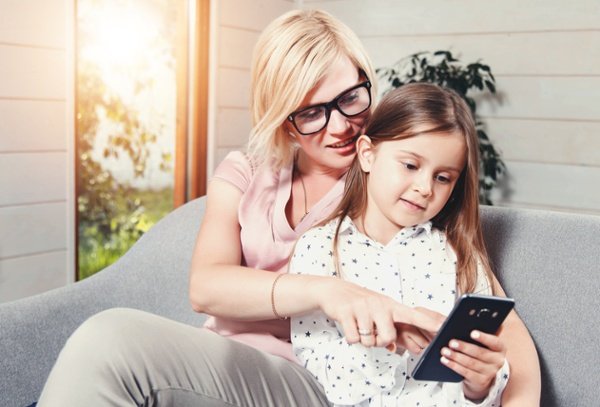A School's Guide for Managing TikTok
March 9, 2020

There are students at your school using TikTok - probably most of them. Use of the social video app by students has exploded over the past couple of years and many schools are struggling to deal with the impact. Students skipping school, broadcasting indecent videos in uniform and distraction from learning are just a few of the side-effects impacting schools, but is it all bad news?
In this post, we explain how TikTok works, delve into negative and positive effects on schools and students, and offer some practical advice for dealing with this latest student craze.
What is TikTok?
TikTok (formerly Musical.ly) is a free social media platform for creating and watching short videos and sharing them with friends and strangers. Clips are often created using short grabs of music and can be enhanced by a range of tools such as filters, animation and special effects. The majority of videos produced are of young people lip-syncing and dancing to popular music but there are also talent videos, comedy skits, challenges and informational clips.
According to mobile intelligence firm Sensor Tower, in 2019 TikTok reached 1.5 billion downloads and was the third-most downloaded non-gaming app of the year, behind only WhatsApp and Facebook Messenger. The popularity of the app, especially among younger students, is quite staggering.
The problems for schools and their students
Although only a relatively new app, there have already been several concerns raised by governments, regulators, and the media, which are a direct concern for schools and their students.
Young students and their privacy & safety concerns
Limiting young children's access to uncensored, user-generated material is expected these days and TikTok’s terms of use state 13 as the minimum age to join the platform. However, in 2019 TikTok was fined US$5.7m (AU$8.4m) in the US after it was found to have illegally harvested personal information of children under 13 who had been using the app - in violation of their terms. TikTok has since set up a separate app for children with no sharing, commenting, messaging or profiles and has removed all videos submitted by pre-teens. But these changes were only made for the US market. Concerns remain regarding the use of the platform by young children globally, which exposes them to many real dangers.
Added to this issue of privacy is the prevalence of online predators targeting these youth. The grooming of young people via social media platforms is a well-documented issue and the popularity of TikTok with young people means there is always that danger. In a report by the BBC, they discovered hundreds of sexually explicit comments on videos posted by children as young as nine.
Upon reporting these comments to TikTok, most were removed within 24 hours, however many comments remained. Another huge concern around this issue is that most of the users who posted these comments were able to remain on the platform, despite TikTok having rules against sexual messages directed at children. A platform that fails to remove known predators from their community is deeply concerning. Comments that are violent, sexist and degrading in nature are also commonplace.
There is also a culture among young people on this platform to post degrading and unhealthy content. There are young men posting about cheating on their girlfriends, young women posting videos about guys ‘pulling out’ to prevent pregnancy, and challenge fads encouraging students to do dangerous tasks, just to name a few. These are easily accessible and send terrible messages regarding healthy lives and relationships, particularly when young viewers are seeing this content.
Skipping school and class distractions in the search for fame
A social media app proving to be a distraction for students both during school and homework times is nothing new.
However, it is the extent to which TikTok has been able to take an addictive hold over students and the resulting behaviours that are particularly concerning. It was recently reported in New Zealand that students had been skipping school in a bid to become TikTok celebrities.
"I've had to go around to houses where kids haven't been coming to school because they just want to make TikTok videos and become famous," Manurewa Intermediate School deputy principal, Thomas Bartlett.
In the quest to maximise teachable moments at school, to have an app that is capable of preventing student attendance altogether is an issue that needs to be addressed by schools. We discuss some ways to approach this later in this article.
Explicit and inappropriate material
There have been several incidents of students uploading inappropriate material while identifiable in their school uniform. A few examples of this behaviour include imitating sex acts and miming to explicit or sexist songs. This situation presents several challenges for a school, the first being to address and educate students over the improper behaviour. Often there may be an element of innocence surrounding this type of behaviour but it is imperative for schools to immediately address it and educate students on both the impact and implications of their actions. It is about identifying teachable moments to impact student behaviour change.
The second problem these incidents raise for schools is one of a PR nature. Having your school in the public spotlight as a result of inappropriate student behaviour is not something your, or any, school wishes to deal with. Therefore, prevention through the approaches outlined below will help ensure that your school is only in the public spotlight for the right reasons.
How schools can help prevent harm - The Three E’s
Education
As with most issues around student cyber-safety and good digital citizenship, the key starting point is education. Ensuring your students, parents and staff are well informed about appropriate digital behaviour and have access to the right resources, information and support are paramount. Enlisting the support of a leading cyber expert can further assist as they are experienced in delivering the safety messages to your students and providing policy advice for your school. Combining an educational approach, adequate IT & cyber-safety policies and supporting technology solutions will ensure your cyber-safety success.
Discover some of the resources and strategies Linewize can assist in delivering cyber-safety education to your students.

Engagement
Students are only under your duty of care during school hours, however, student cyber-safety is a 24/7 issue. Therefore, engagement and support from parents and carers is required to ensure messages of responsible internet and device use are reinforced at home. Inform your parent community with up-to-date resources regarding child cyber safety issues and engage them through interactive learning events. This will ensure they can play an important role in their child’s cyber safety. Furthermore, giving parents access to cutting-edge filtering technology can ensure they can apply appropriate filtering and internet usage controls for their children at all times in their young lives.
See how Linewize can help you engage your parent community and reinforce positive digital behaviour at home.
Empowerment
The challenge educators face in keeping students on track in class and at home is immense. The internet, and apps like TikTok in particular, is a powerful distraction for young minds and therefore technology should be employed to help maintain their focus on studies and education. Teacher software, such as Linewize Classwize, empowers teachers to keep their class focussed with the ability to monitor student learning devices during classes and block apps and websites that are not suitable for the lesson. School Manager can ensure every student is protected and their digital devices being used purely for learning purposes during school hours, no matter what network they are connected to. And detailed reporting can help identify potentially dangerous student behaviour before it becomes a problem. Beyond the school gate, the Family Zone Connec app empowers parents to set firm boundaries around what their children can access online - and when they can access it - while allowing the flexibility that modern family life demands.
Check out Linewize’s range of tech solutions empowering your entire school community and assisting your students on their safe digital journeys.
The upsides to students using TikTok
All this bad press and potential harm to students might leave you thinking there is nothing good to come from a technological craze such as TikTok. However, as we live in a digitised world (which is even more prevalent for your students), technology and digital communication skills are very important for the life of your students. We can see many examples of students utilising social media platforms for good - with TikTok being no different.
Students around the world are using TikTok to engage other young people in constructive pursuits and discussions, delivering positive and supportive messages on a wide range of issues that affect them and the wider world.

Climate change
Recent global climate strikes by students have made it clear that young people are concerned about the environment and will go to lengths to ensure their voices are heard and positive changes made. Tara Bellerose is an example of a climate motivated youth utilising the TikTok platform to help educate other young people around this important issue. As a young farmer from Victoria in Australia, Tara has first-hand experience of the increasingly unpredictable weather and utilises the platform to share her urgent messages about climate change. Young students also turned to TikTok to raise their concerns about Australian Prime Minister Scott Morrison’s reaction to the 2019 Bushfire Crisis, with parodies highlighting his decision to go on holiday at that pivotal time.
Student activism
TikTok has allowed conscientious students around the world to speak up on issues that they feel are important and affect them personally. The TikTok users highlighted in this article by the BBC cover a broad range of topics young people are discussing with their peers such as wealth inequality, cancer treatment, indigenous issues, gender and sexuality, climate change and even starting movements in support of teachers - imagine that!
Breaking down social barriers
Recent social media apps such as Instagram, have been pushing unrealistic expectations about life on young people. Picture perfect people, locations and lives are presented as the norm and this drives an unrealistic expectation in young people for a perfect aesthetic life. Studies have linked social media with unhappiness in young people as they struggle to meet these unrealistic expectations they view constantly online. However, some young TikTok users are helping to break down some of these expectations by expressing and normalising more real life, or ‘cringeworthy’, moments - celebrating the normal and the awkward which is so much a feature of real student life.
Responsible use of digital technologies
These are just a few examples of how students are utilising the platform to help spread positive and educational messages or discuss issues relevant to other young people. Schools do have the ability to encourage and promote this kind of positive use of TikTok and indeed any other digital medium. Ultimately technologies such as TikTok are here to stay, so through education, engagement and empowerment schools can equip their students to use these platforms responsibly and for positive purposes.
Topics: Cyber Safety, grooming, Social Media, dangerous apps
Would you like some more information? Or a demo?
Get in touchSubscribe to our newsletter
Popular posts
Recent posts
What Student Digital Risks Can Your School Expect in 2024?
Helping Australian Schools Better Safeguard Students This Academic Year
Navigating harmful content online: A guide to managing children’s exposure to distressing content online
In light of current international events, young people may come into contact with distressing online content. This article has been written ...
Safer Internet Day 2023 - Easy ways schools can get involved
Tuesday, 7th February 2023, is Safer Internet Day, an excellent opportunity for your school to educate, inspire and empower your students ...
